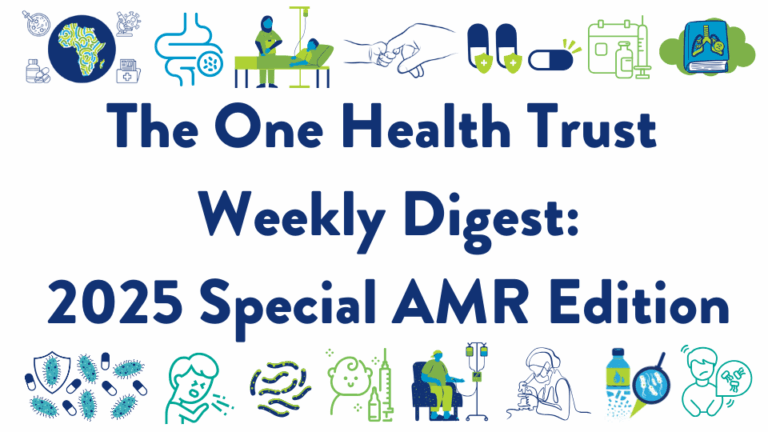April 28, 2019

CDDEP researchers in the media note the threat of Candida auris and strategies to prevent drug-resistant outbreaks. C. auris is a rare drug-resistant fungal infection that poses a deadly threat to immunocompromised patients who are vulnerable to infections. The fungus has the unusual ability to survive for long periods on hospital surfaces, which increases the risk of infection for patients with long hospital stays. To prevent deadly outbreaks of C. auris, it is essential to address failures in infection control and sanitation procedures, reduce antimicrobial use, and monitor the emergence of C. auris cases. Understaffing of hospitals in developing countries also contributes indirectly to the problem of antimicrobial resistance in C. auris and other disease-causing bacteria. In India, the shortage of 600,000 doctors, estimated in CDDEP’s Access Barriers to Antibiotics Report, is hindering the fight against antibiotic resistance. CDDEP researchers recommend Indian governments to increase doctor salaries and improve work environments in an effort to better retain qualified healthcare workers. [Hindustan Times, The Telegraph]
Surveillance of multidrug-resistant organisms in Michigan hospitals. Researchers prospectively followed 399 patients from two Michigan hospitals, sampling each patient for multi-drug resistant organisms (MDRO) several times between hospital arrival and hospital discharge. Results showed that 14 percent of patients were already colonized with MDROs within 24 hours of hospital admission. Multi-drug resistant organisms were observed on 10 percent of patients’ hands, and in 29 percent of hospital rooms and revealed a high correlation between MRSA on patient hands and on hospital surfaces. These findings suggest the need for improved hospital surface sanitation and patient hand hygiene procedures. [CIN]
Bankruptcy of antibiotic development company raises worry. Achaogen, the biopharmaceutical company known for developing new antibiotics designed to fight multi-drug resistant infections, announced bankruptcy last week. Achaogen developed the FDA-approved antibiotic plazomicin in June 2018 for the treatment of complicated UTIs. The company plans to continue normal operations during their auction and sale process, but this news raises worry among similar companies fighting to stay afloat in the world’s broken antibiotic market. [Achaogen, CIDRAP, WIRED]
Financial barriers to gender-neutral HPV vaccination in Africa. Despite a call for the introduction of gender-neutral HPV vaccinations in Africa earlier this year, financial barriers may hinder implementation. Currently, only 1-2 percent of women aged between 10-20 years in Africa receive the HPV vaccine. This has led researchers to recommend that resources be focused on increasing coverage among women. HPV vaccination in males has been proven effective in reducing the burden of cervical cancer and should be implemented into national immunization programs in the future, but only following the promotion of HPV vaccination in women. [The Lancet Global Health]
WHO Ebola responder killed in DRC hospital attack. Dr. Richard Valery Mouzoko Kiboung, a WHO epidemiologist responding to the Ebola outbreak in the Democratic Republic of the Congo (DRC) was killed last week in a hospital attack on Butembo University Hospital. The attacks occurred during a hospital coordination meeting and act as a safety barrier in controlling the ongoing Ebola outbreak. However, WHO remains fully committed to supporting the DRC Ministry of Health with outbreak response. [WHO]
Vaccine hesitancy a threat to global health.Vaccine hesitancy is on the rise in over 90 percent of countries across the globe, causing vaccine coverage for some preventable diseases to drop below the thresholds necessary for herd immunity. Although measles was eradicated in the United States in 2000, the country has seen measles outbreaks in communities where measles-mumps-rubella vaccine coverage is as low as 60 percent. Worldwide, there has been a 30 percent surge in measles cases. Physicians, policy makers, governments, and media platforms all play an essential role in preventing vaccine misinformation and hesitancy. [The Lancet Child and Adolescent Health]
Stigma slows leprosy elimination in India. India declared that leprosy was no longer a health issue in 2005 when prevalence of symptomatic cases significantly decreased. However, this may have been due to the government’s lack of surveillance. India redirected its resources away from leprosy programs and over to other public health threats like AIDs and tuberculosis, while the leprosy-causing bacterium continued to spread silently. Because of the stigma associated with the disease, leprosy is rarely talked about in India. Organizations are working to promote leprosy awareness campaigns that encourage leaders to talk openly about the disease and train health officials to diagnose and treat early cases. The World Health Organization aims to decrease new cases of leprosy-associated deformities to less than one per one million people by 2020. [NYTimes]
Burden and etiology of less severe diarrheal episodes among children in LMICs. In a case-control study conducted as an extension to the Global Enteric Multicenter study, researchers recruited children with moderate-to-severe (MSD) and less-severe diarrhea (LSD) from 6 hospital sites in low-and-middle-income countries. After collecting clinical data and fecal samples for all cases, findings showed that rotavirus, Cryptosporidium spp, enterotoxigenic Escherichia coli, and Shigella spp were the pathogens responsible for most MSD and LSD cases. To reduce the burden of MSD and LSD, researchers recommend interventions should target these specific pathogens. [The Lancet Global Health]
Statins fail to meet reduction target of LDL cholesterol in half of patients. Researchers at the University of Nottingham explored the effectiveness of statins in lowering low density lipoprotein (LDL) cholesterol levels in patients by at least 40 percent. Results found that 51.2 percent of patients taking statins failed to meet this reduction target within 24 months. These patients who failed to meet the LDL target were 22 percent more likely to develop cardiovascular disease than those who met the target (adjusted hazard ratio: 1.22; P<.0001). The study does not account for the effect of patient non-adherence to statins, but authors note that results reflect real world treatment responses. Findings emphasize the need for interventions to allow doctors to individualize statin treatment options for patients. [BMJ]
Photo: Shutterstock











